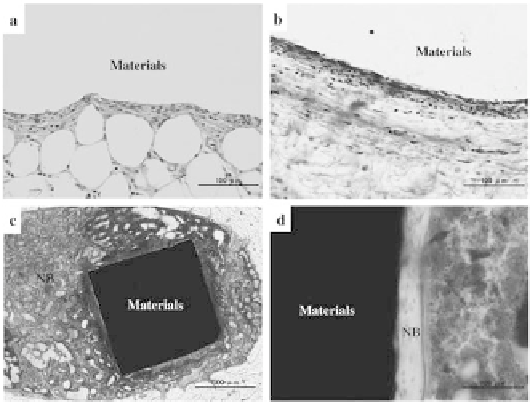Biomedical Engineering Reference
In-Depth Information
was remodeled to lamellar bone, and part of the lamellar bone
attached to the implant directly (Fig. 10.11d). Fibrous tissue was not
observed by Wang
et al
. between bone tissue and the CNT implant
[61].
Figure 10.11
Tissue reactions in subcutaneous tissue at (a) 1 week and
(b) 4 weeks; osteogenesis in the femur at (c) 1 week and (d)
4 weeks [61].
Binder-free MWCNT blocks cross-linked by de-luorination were
prepared by Sato
et al
. using thermal heating and a compression in
vacuum [50]. The carbon nanotube blocks are lighter than graphite,
and can be machined and polished. The binder-free MWCNT blocks
possess good biocompatibility when tested in the subcutaneous
tissue of rats [50]. The MWCNT blocks have a low apparent density
1.44 g/cm
3
, average three times stronger in mechanical strength,
bending strengths of 102.2 MPa and a bending modulus of 15.4 GPa,
than that of commercial graphite.
10.3 CarbonNanofibers
Carbon nanoibers are a promising new class of dental or orthopedic
implant materials with improved osseointegrative properties [15].
Elias
et al
. show the possible use of carbon nanoiber compacts
(Fig. 10.12) in implant applications.

















